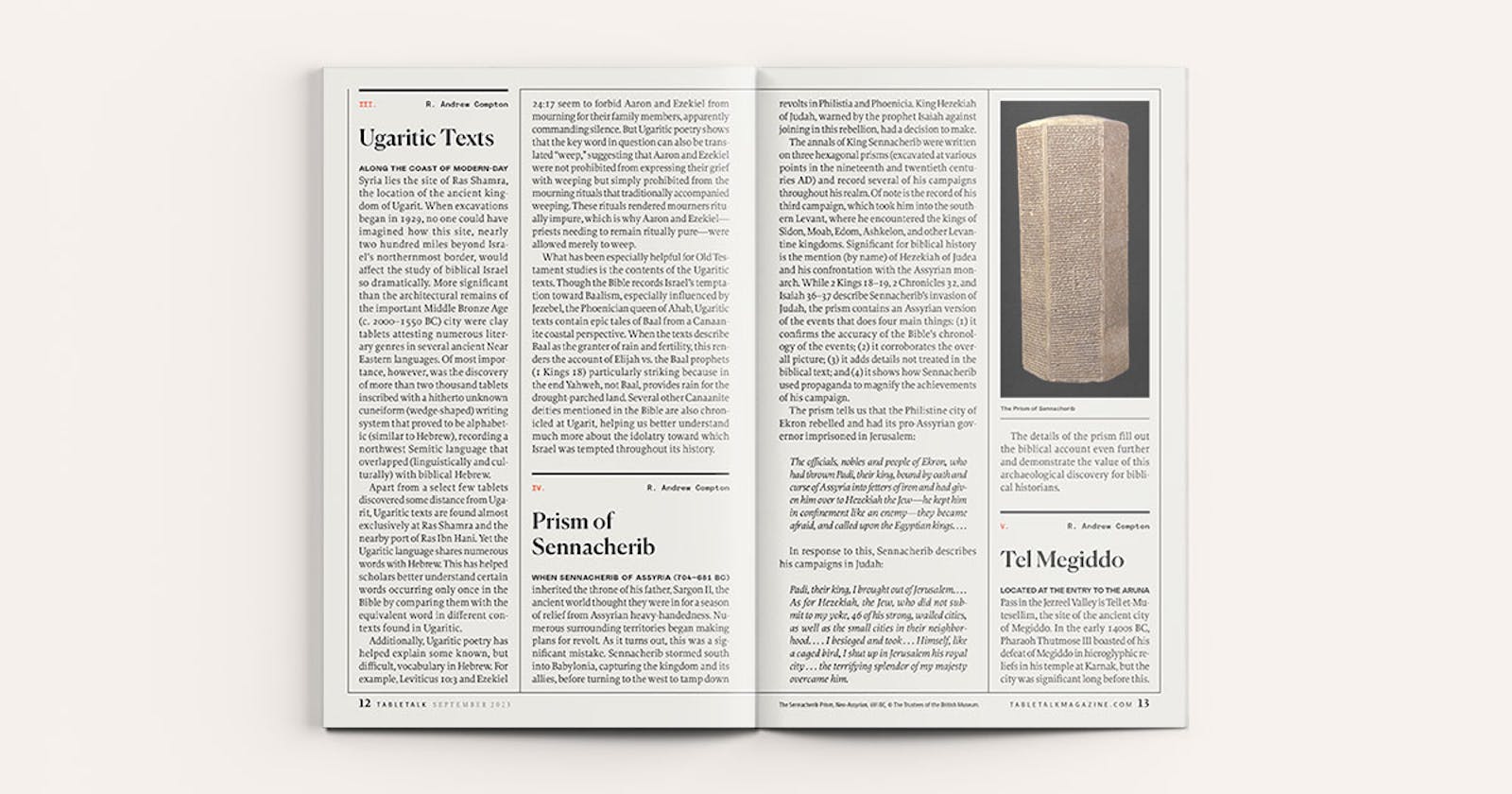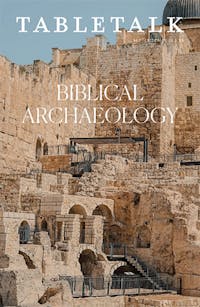
Request your free, three-month trial to Tabletalk magazine. You’ll receive the print issue monthly and gain immediate digital access to decades of archives. This trial is risk-free. No credit card required.
Try Tabletalk NowAlready receive Tabletalk magazine every month?
Verify your email address to gain unlimited access.
Along the coast of modern-day Syria lies the site of Ras Shamra, the location of the ancient kingdom of Ugarit. When excavations began in 1929, no one could have imagined how this site, nearly two hundred miles beyond Israel’s northernmost border, would affect the study of biblical Israel so dramatically. More significant than the architectural remains of the important Middle Bronze Age (c. 2000–1550 BC) city were clay tablets attesting numerous literary genres in several ancient Near Eastern languages. Of most importance, however, was the discovery of more than two thousand tablets inscribed with a hitherto unknown cuneiform (wedge-shaped) writing system that proved to be alphabetic (similar to Hebrew), recording a northwest Semitic language that overlapped (linguistically and culturally) with biblical Hebrew.
Apart from a select few tablets discovered some distance from Ugarit, Ugaritic texts are found almost exclusively at Ras Shamra and the nearby port of Ras Ibn Hani. Yet the Ugaritic language shares numerous words with Hebrew. This has helped scholars better understand certain words occurring only once in the Bible by comparing them with the equivalent word in different contexts found in Ugaritic.

Additionally, Ugaritic poetry has helped explain some known, but difficult, vocabulary in Hebrew. For example, Leviticus 10:3 and Ezekiel 24:17 seem to forbid Aaron and Ezekiel from mourning for their family members, apparently commanding silence. But Ugaritic poetry shows that the key word in question can also be translated “weep,” suggesting that Aaron and Ezekiel were not prohibited from expressing their grief with weeping but simply prohibited from the mourning rituals that traditionally accompanied weeping. These rituals rendered mourners ritually impure, which is why Aaron and Ezekiel—priests needing to remain ritually pure—were allowed merely to weep.
What has been especially helpful for Old Testament studies is the contents of the Ugaritic texts. Though the Bible records Israel’s temptation toward Baalism, especially influenced by Jezebel, the Phoenician queen of Ahab, Ugaritic texts contain epic tales of Baal from a Canaanite coastal perspective. When the texts describe Baal as the granter of rain and fertility, this renders the account of Elijah vs. the Baal prophets (1 Kings 18) particularly striking because in the end Yahweh, not Baal, provides rain for the drought-parched land. Several other Canaanite deities mentioned in the Bible are also chronicled at Ugarit, helping us better understand much more about the idolatry toward which Israel was tempted throughout its history.
